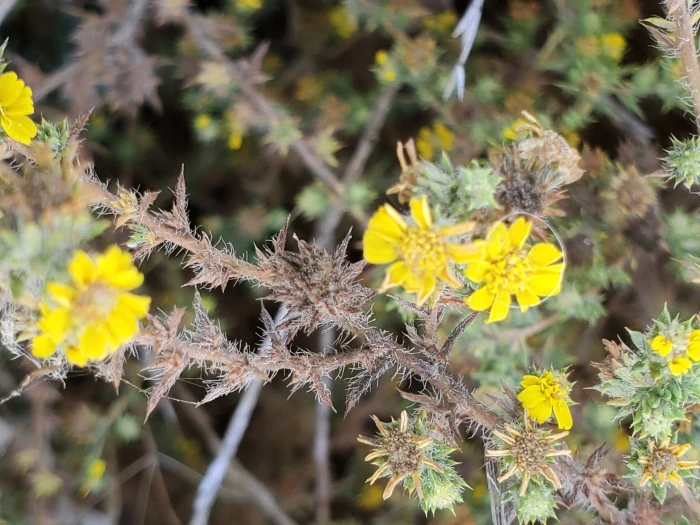Pappose Tarweed
(Centromadia parryi)
Pappose Tarweed (Centromadia parryi)
/
/

© Mary K. Hanson
CC BY 4.0
Image By:
© Mary K. Hanson
Recorded By:
Copyright:
CC BY 4.0
Copyright Notice:
Photo by: © Mary K. Hanson | License Type: CC BY 4.0 | License URL: http://creativecommons.org/licenses/by/4.0/ | Uploader: simpylmare55 | Publisher: iNaturalist |
























Estimated Native Range
Climate Requirements for Fridley, Minnesota
| This Plant | Your Site | Plant Suitability for Your Location | ||
|---|---|---|---|---|
| • Precipitation | 7" - 47" | 30" | Your precipitation may be insufficient for this plant. Irrigate N" / year. | Irrigate N" / year |
| • High Temp. | 73°F - 99°F | 85°F | Your summer temperatures are normal for this plant. | Excellent |
| • Low Temp. | 33°F - 47°F | 3°F | Your winter temperatures may be too cold for this plant | Too cold |
This plant should grow well at your location with about N inches per year (Y minutes per month) of irrigation.
Summary
Centromadia parryi, commonly known as Pappose Tarweed, is an annual herb native to the chaparral, valley grasslands, and coastal sage scrub of California and northern Baja California. It can grow up to 28 inches tall and is characterized by its sticky stems and foliage, which exude a distinctive tar-like aroma. Pappose Tarweed produces numerous showy yellow flower heads from late spring to early fall, each with both ray and disc florets that attract a variety of pollinators.
Pappose Tarweed is valued for its drought tolerance and ability to thrive in poor, disturbed soils, making it suitable for restoration projects and naturalistic plantings. It is often used in wildflower mixes for its bright flowers and adaptability. In cultivation, it requires minimal water once established, prefers full sun, and is tolerant of a range of soil types, though it does best in well-drained soils. There are no popular garden cultivars of this species. While generally pest-free, it can become weedy and may self-seed prolifically if conditions are favorable.CC BY-SA 4.0
Pappose Tarweed is valued for its drought tolerance and ability to thrive in poor, disturbed soils, making it suitable for restoration projects and naturalistic plantings. It is often used in wildflower mixes for its bright flowers and adaptability. In cultivation, it requires minimal water once established, prefers full sun, and is tolerant of a range of soil types, though it does best in well-drained soils. There are no popular garden cultivars of this species. While generally pest-free, it can become weedy and may self-seed prolifically if conditions are favorable.CC BY-SA 4.0
Plant Description
- Plant Type: Herb
- Height: 0.5-2 feet
- Width: 0.5-2 feet
- Growth Rate: Moderate
- Flower Color: Brown, Purple, Red, Yellow
- Flowering Season: Spring, Summer, Fall
- Leaf Retention:
Growth Requirements
- Sun: Full Sun
- Water: Low
- Drainage: Medium, Fast
Common Uses
Bee Garden, Bird Garden, Butterfly Garden, Low Maintenance
Natural Habitat
Native to chaparral, valley grasslands, and coastal sage scrub of California and northern Baja California
Other Names
Common Names: Parry’s Spikeweed, Tarweed
Scientific Names: Centromadia parryi, Hemizonia parryi subsp. typica, Hemizonia parryi var. parryi
GBIF Accepted Name: Centromadia parryi